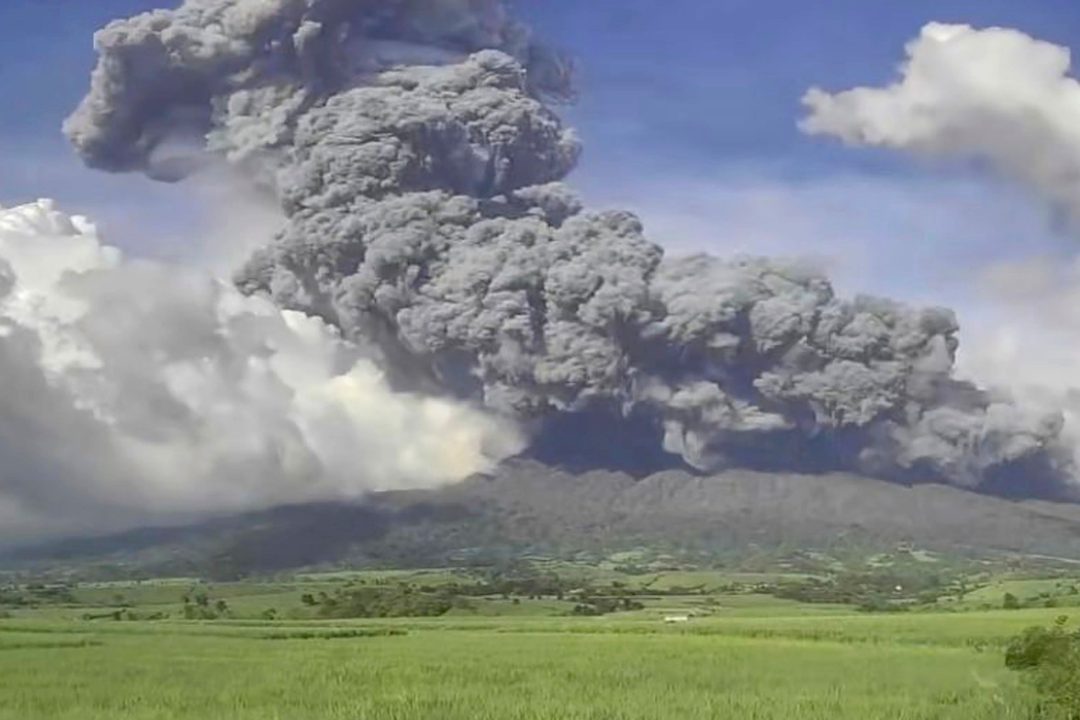About 87,000 people have been forced to move as villages were evacuated in a central Philippine region on Tuesday, a day after a volcano briefly erupted with a towering ash plume and streams of gas and debris hurtling down its western slopes.
The latest eruption of Mount Kanlaon, on central Negros island, did not cause any immediate casualties, but the alert level was raised one level, indicating further and more explosive eruptions may occur.
Volcanic ash fell on a wide area, including Antique province, more than 124 miles across seawaters west of the volcano, obscuring visibility and posing health risks, Philippine chief volcanologist Teresito Bacolcol and other officials said.
At least six domestic flights and a flight bound for Singapore were cancelled and two local flights were diverted in the region on Monday and Tuesday due to Kanlaon’s eruption, according to the Civil Aviation Authority of the Philippines.
The mass evacuations were being carried out urgently in towns and villages nearest the western and southern slopes of Kanlaon which were blanketed by its ash.
More than 6,000 people have moved to evacuation centres, aside from those who have temporarily transferred to the homes of relatives in La Castellana by Tuesday morning, the town’s mayor Rhumyla Mangilimutan told The Associated Press by telephone.
Disaster-response contingents were rapidly establishing evacuation centres and seeking supplies of face masks, food and hygiene packs ahead of the Christmas season, traditionally a peak time for holiday travel and family celebrations in the largely Roman Catholic nation.
Authorities also shut schools and imposed a nighttime curfew in the most vulnerable areas.
The Philippines’ Institute of Volcanology and Seismology said the nearly four-minute eruption of Kanlaon volcano on Monday afternoon had caused a pyroclastic density current — a super hot stream of gas, ash, debris and rocks that can incinerate anything in its path.
“It’s a one-time but major eruption,” Mr Bacolcol said, adding that volcanologists were assessing if Monday’s eruption spewed old volcanic debris and rocks clogged in and near the summit crater or was caused by rising magma from underneath.
Few volcanic earthquakes were detected ahead of Monday’s explosion, he said.
The alert level around Kanlaon was placed to the third-highest of a five-step warning system, indicating that “magmatic eruption” may have begun and may progress to further explosive eruptions.
The 7,988-foot volcano, one of the country’s 24 most-active volcanoes, last erupted in June sending hundreds of villagers to emergency shelters.
In 1996, three hikers were killed near the peak and several others were later rescued when Kanlaon erupted without warning, officials said.
Located in the so-called Pacific Ring of Fire, a region prone to earthquakes and volcanic eruptions, the Philippines is also lashed by about 20 typhoons and storms a year and is among the countries most prone to natural disasters.
Follow STV News on WhatsApp
Scan the QR code on your mobile device for all the latest news from around the country


 PA Media
PA Media



















